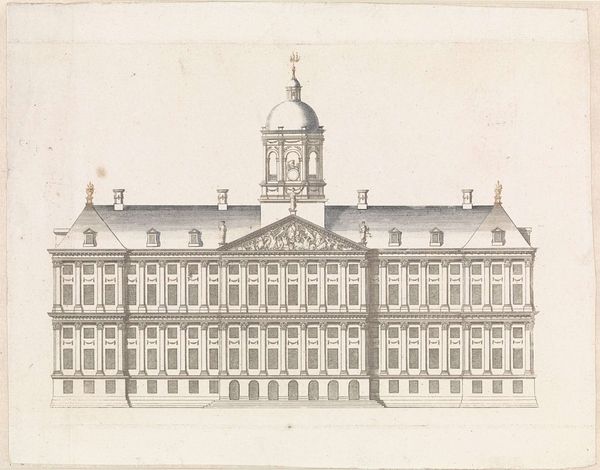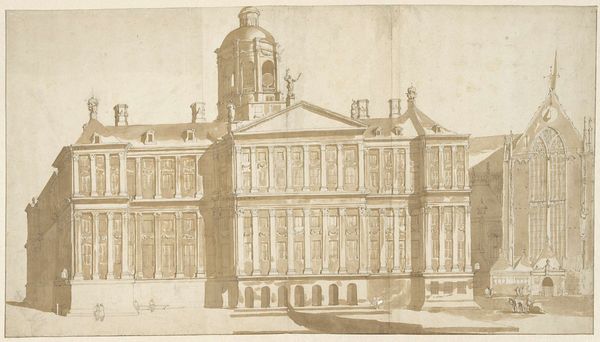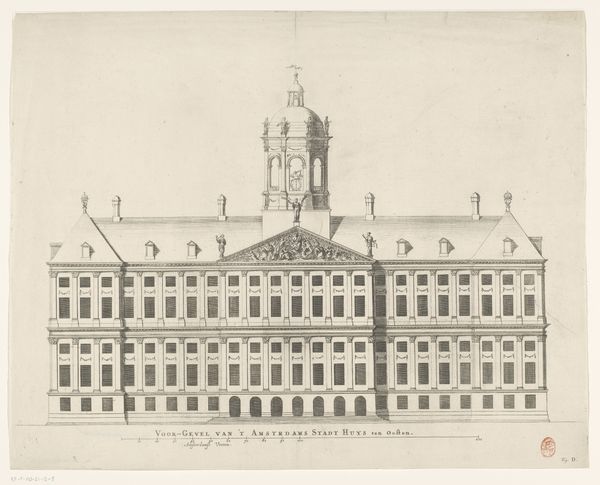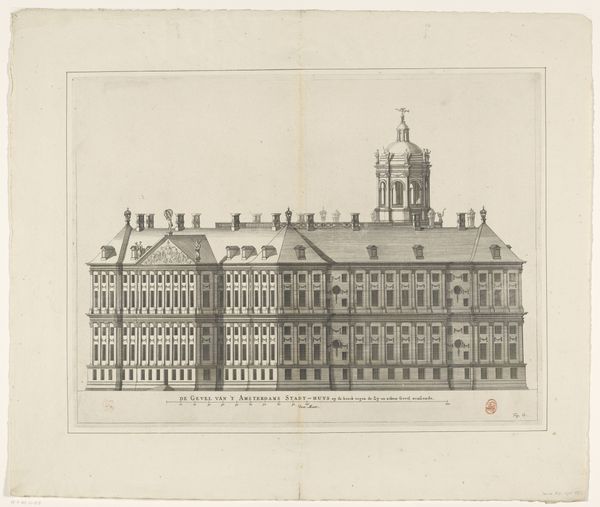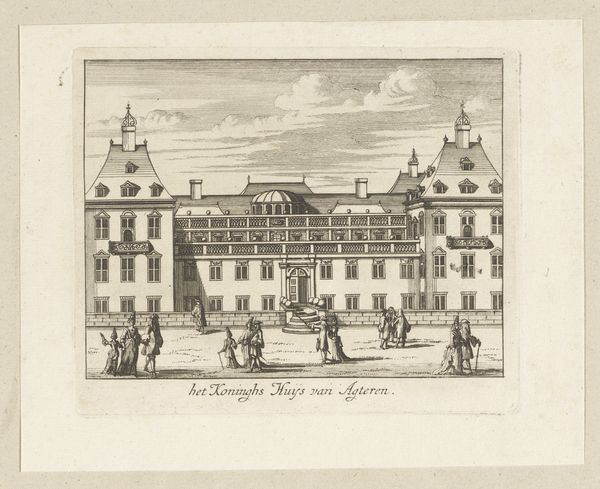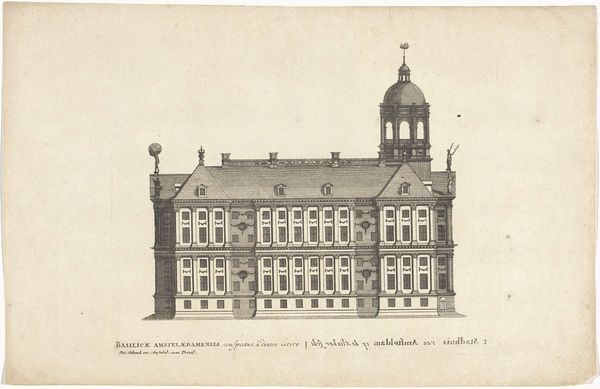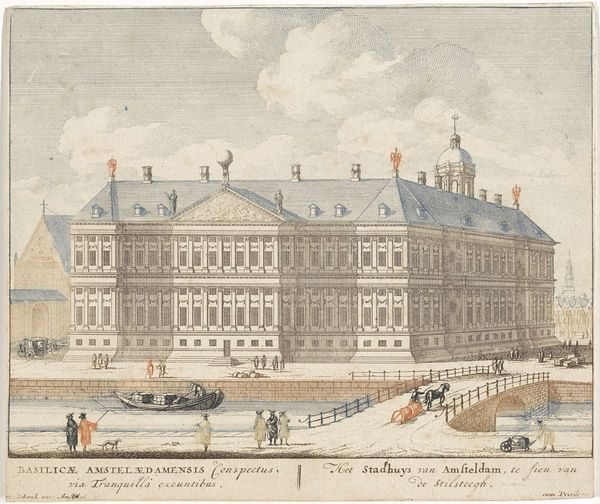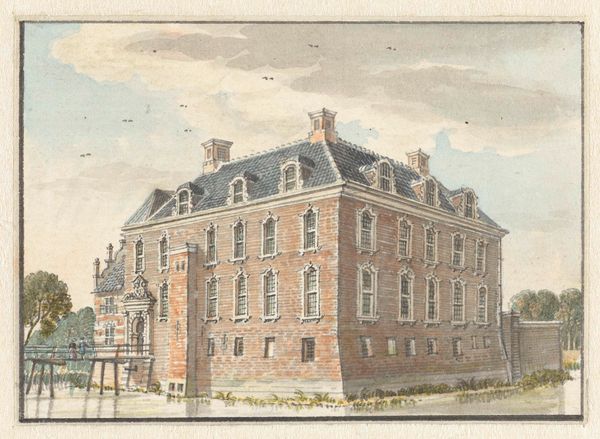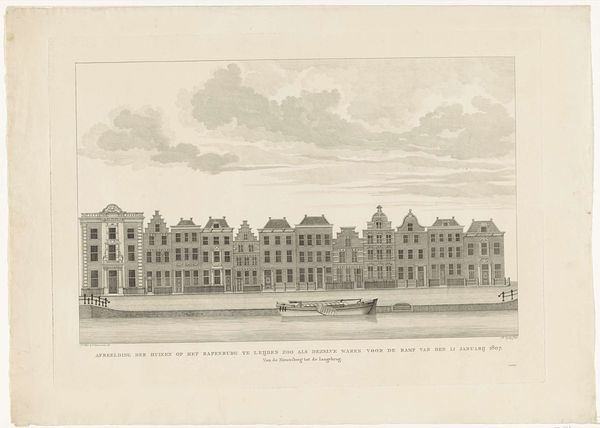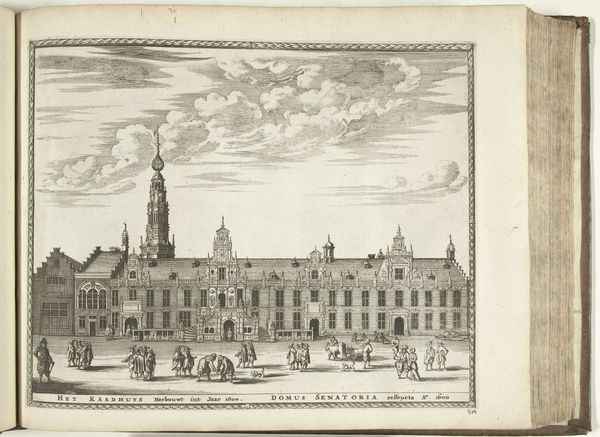
Zijgevel van het Stadhuis te Amsterdam met balustrade op het dak 1696 - 1706
0:00
0:00
drawing, watercolor, ink, architecture
#
drawing
#
blue ink drawing
#
baroque
#
dutch-golden-age
#
watercolor
#
ink
#
cityscape
#
watercolour illustration
#
watercolor
#
architecture
Dimensions: height 156 mm, width 243 mm
Copyright: Rijks Museum: Open Domain
Curator: Here we have an architectural study, “Zijgevel van het Stadhuis te Amsterdam met balustrade op het dak,” or “Side view of Amsterdam City Hall with balustrade on the roof.” Attributed to an anonymous artist working between 1696 and 1706. The work is a meticulous drawing combining ink and watercolor. Editor: It feels surprisingly understated, doesn't it? Almost like a technical blueprint. The palette is quite restrained, a symphony of greys and pale browns, though it has a rather grand symmetrical facade that hints at power. Curator: Indeed. Amsterdam City Hall, now the Royal Palace, was an important symbol of civic pride and power during the Dutch Golden Age. Its construction, and depictions like this one, were deliberately intended to project Amsterdam’s mercantile dominance and republican values onto the world stage. Editor: Right, but those values were often selectively applied. How complicit was the city in exploitative colonial practices while this symbol of republicanism was being erected? That tension – between proclaimed ideals and material realities – makes viewing it so poignant. It almost seems like a denial in this rendering. Curator: Precisely! This facade becomes a carefully constructed narrative. Note how the artist focuses on the controlled perspective and detailing, emphasizing rational order. Editor: But does it offer an impartial gaze or perhaps idealize the power that architecture can have as a public symbol? How many were excluded from the freedoms promised by that symbol? Curator: Such images often papered over societal divisions. These commissions supported the art world and glorified the established power structures, serving specific agendas, rather than representing a wide spectrum of society. Editor: And yet, that calculated act of framing creates its own unintended impact on our current reflections of those power structures, prompting critical interrogation as we stand here examining these images today. Curator: I agree entirely. Seeing this image allows us to engage with the narratives being constructed then, while actively deconstructing them today. Editor: So, while the drawing might appear initially as a simple architectural record, it really encapsulates a complex historical narrative. Curator: A narrative that prompts us to question whose voices and experiences were considered of importance when this image and building were constructed and celebrated.
Comments
No comments
Be the first to comment and join the conversation on the ultimate creative platform.
